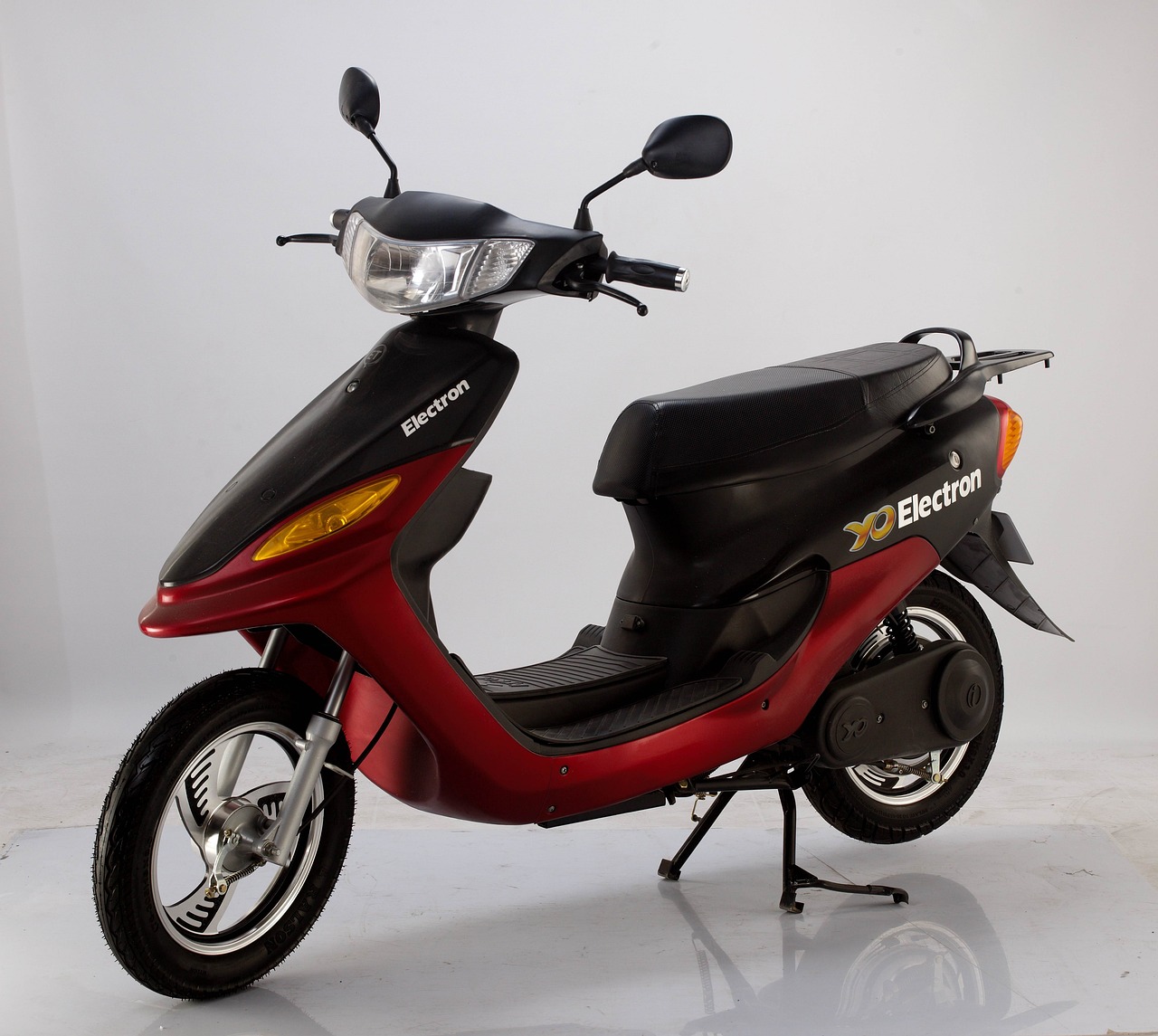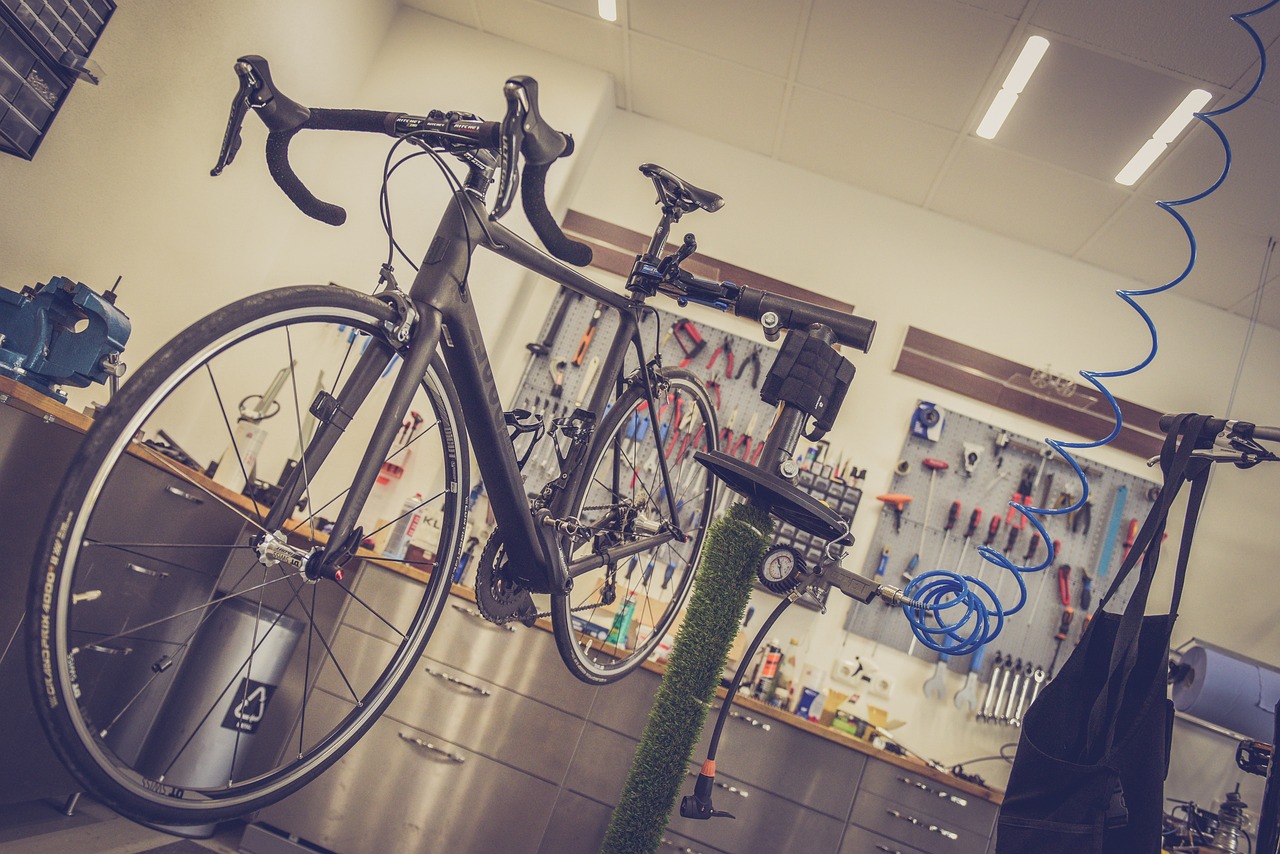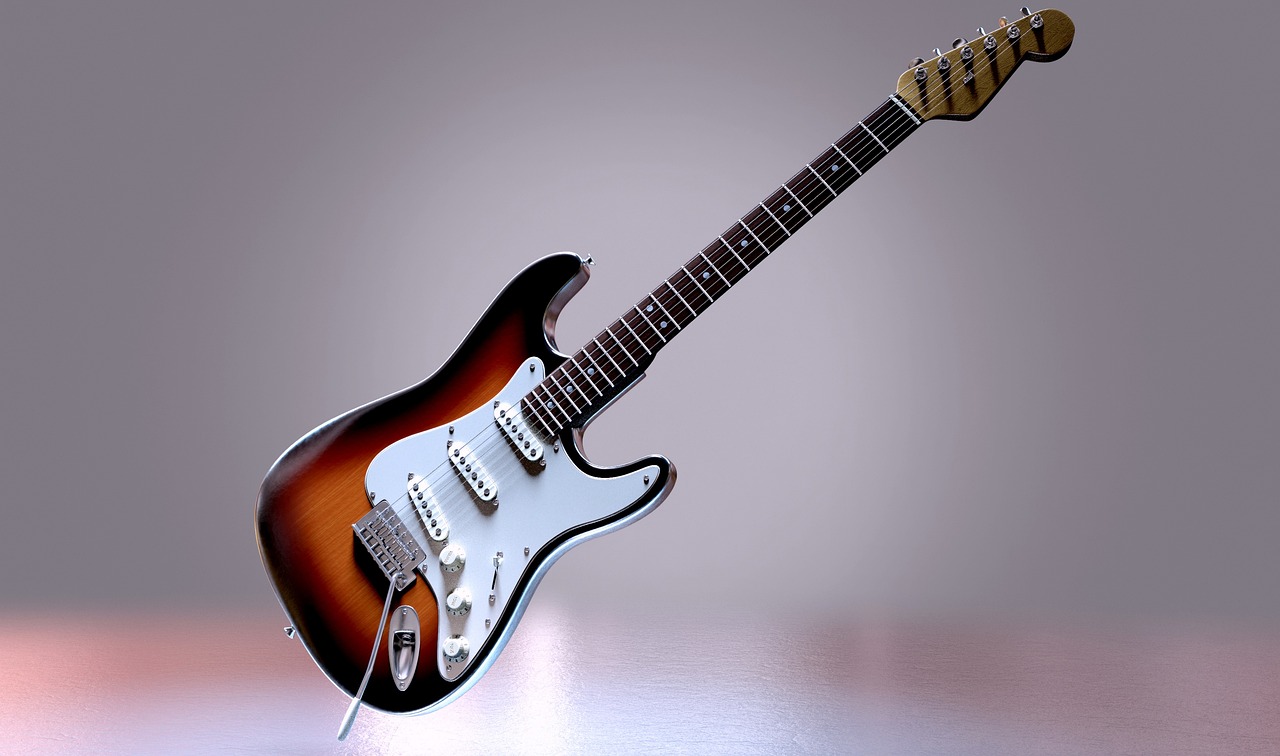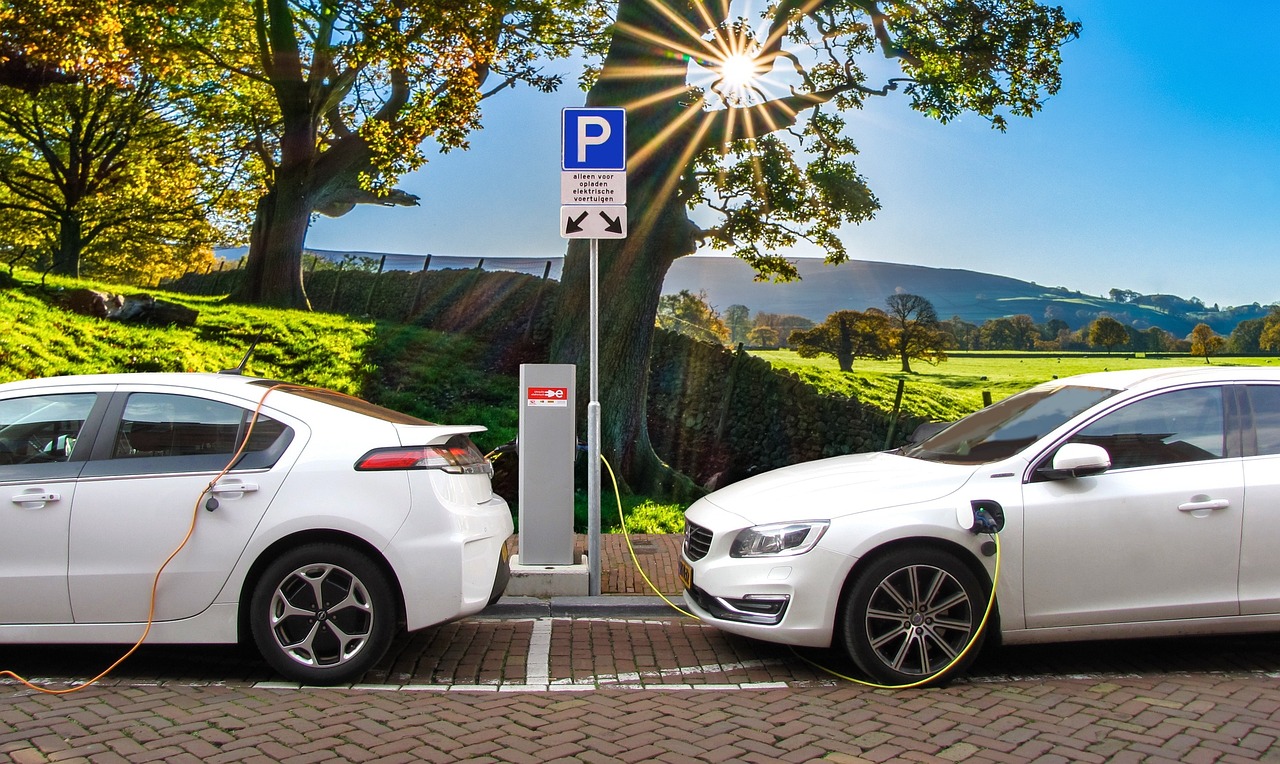This article provides essential tips and insights on maintaining your electric bike to ensure its longevity and optimal performance. Covering everything from battery care to tire maintenance, we aim to equip you with the knowledge needed for effective upkeep.
Understanding the key components of your electric bike is crucial for effective maintenance and troubleshooting. Familiarizing yourself with parts like the battery, motor, and tires will help you identify what requires attention.
Battery Care: Maximizing Lifespan
The battery is the heart of your electric bike. Proper care and charging practices can significantly extend its lifespan. Here are some tips:
- Charging Best Practices: Always use the charger provided by the manufacturer and avoid overcharging. Ideally, charge your battery when it reaches 20-30% capacity.
- Temperature Considerations: Store your battery in a cool, dry place. Extreme temperatures can damage the battery, so avoid leaving it in direct sunlight or freezing conditions.
- Signs of Battery Wear: Be alert for a decrease in range or unusual sounds during charging. These may indicate that your battery needs replacement.
Tire Maintenance for Safety and Performance
Tires play a crucial role in the performance and safety of your electric bike. Regular maintenance includes:
- Checking Tire Pressure: Use a pressure gauge to ensure your tires are inflated to the recommended PSI, which can usually be found on the tire sidewall.
- Inspecting Tire Tread: Regularly check for wear and tear. Replace tires that show significant wear to maintain traction and safety.
Regular Cleaning and Lubrication
Keeping your electric bike clean and well-lubricated is essential for optimal performance:
- Cleaning Your Electric Bike: Use mild soap and water to clean your bike, avoiding harsh chemicals that can damage the components.
- Lubricating Moving Parts: Apply lubricant to the chain and other moving parts regularly to prevent wear and ensure smooth operation.
Regular Inspections and Tune-Ups
Conducting regular inspections can help identify potential issues before they escalate:
- DIY Inspections: Familiarize yourself with basic inspection techniques to save time and money. Look for loose bolts, frayed wires, and other signs of wear.
- When to Seek Professional Help: If you encounter issues beyond your expertise, consult a professional to ensure your bike remains in top condition.
Conclusion: By following these maintenance tips, you can ensure that your electric bike remains in excellent condition, providing you with a safe and enjoyable riding experience for years to come.

Understanding Your Electric Bike Components
Familiarizing yourself with the key components of your electric bike is essential for effective maintenance and troubleshooting. Each part plays a critical role in the bike’s overall performance, and understanding them can enhance your riding experience.
| Component | Function | Maintenance Tips |
|---|---|---|
| Battery | Powers the electric motor, providing energy for rides. | Charge regularly and store in a cool, dry place. |
| Motor | Drives the bike forward, offering assistance based on pedaling. | Keep clean and check for unusual noises. |
| Controller | Regulates power from the battery to the motor. | Ensure connections are secure and free from corrosion. |
| Brakes | Ensure safe stopping of the bike. | Inspect pads regularly and replace when worn. |
| Tires | Provide traction and support weight. | Check pressure and tread depth frequently. |
By understanding these components, you can perform regular checks and maintenance, ensuring your electric bike remains in optimal condition. For example, keeping an eye on the battery’s health can prevent unexpected failures during rides. Additionally, knowing how to troubleshoot common issues, such as a motor that isn’t responding or brakes that feel spongy, can save you time and money.
- Battery: Monitor for signs of wear, such as reduced range.
- Motor: Listen for unusual sounds that may indicate problems.
- Brakes: Regularly test braking performance to ensure safety.
In conclusion, a thorough understanding of your electric bike’s components is pivotal for maintaining its performance and longevity. By staying proactive in your maintenance efforts, you can enjoy a safer and more efficient ride.

Battery Care: Maximizing Lifespan
The battery is the heart of an electric bike, playing a crucial role in its overall performance and longevity. Proper care and charging practices can significantly extend the lifespan of your battery, ensuring that your electric bike remains reliable and efficient for years to come. Below, we will explore some essential tips on how to maximize your battery’s lifespan through optimal charging cycles and effective storage practices.
Understanding the best charging practices is vital for maintaining the health of your electric bike battery. Here are some key points to consider:
- Avoid Deep Discharges: Try to charge your battery before it drops below 20%. Deep discharges can lead to reduced battery capacity over time.
- Frequent Partial Charges: Lithium-ion batteries, commonly used in electric bikes, benefit from frequent partial charges rather than waiting for a full discharge.
- Use the Right Charger: Always use the charger that came with your electric bike to avoid compatibility issues and potential damage.
Proper storage of your battery is just as important as how you charge it. Here are some tips to keep in mind:
- Temperature Control: Store your battery in a cool, dry place. Extreme temperatures can negatively impact battery performance.
- Charge Before Storing: If you plan to store your electric bike for an extended period, charge the battery to around 50% to maintain its health.
- Regular Checks: Periodically check the battery charge level to ensure it does not drop too low during storage.
Being able to recognize the signs of battery wear can help you take proactive measures. Look out for:
- Reduced Range: If you notice that your bike doesn’t travel as far on a single charge, it may be time to consider a replacement.
- Swelling or Damage: Any physical damage or swelling is a clear sign that the battery needs immediate attention.
- Longer Charging Times: If your battery takes significantly longer to charge than it used to, this could indicate wear.
By following these guidelines, you can significantly improve the lifespan and performance of your electric bike battery, ensuring a smooth and enjoyable riding experience.
Charging Best Practices
Understanding how to charge your electric bike battery correctly is essential for maintaining its health and longevity. Proper charging practices not only extend the battery’s lifespan but also enhance the overall performance of your electric bike. Here are some best practices to consider:
- Use the Right Charger: Always use the charger that is specifically designed for your electric bike model. Using an incompatible charger can lead to battery damage.
- Avoid Overcharging: Once your battery reaches a full charge, unplug it immediately. Overcharging can cause overheating and reduce the battery’s overall lifespan.
- Charge Regularly: It’s advisable to charge your battery after every ride, especially if you’ve depleted it significantly. Regular charging helps maintain the battery’s health.
- Keep it Cool: Charge your battery in a cool environment. High temperatures can degrade battery performance and capacity. Aim for a temperature range of 32°F to 77°F (0°C to 25°C).
- Store Properly: If you’re not using your bike for an extended period, store the battery at a charge level between 40% and 60%. This helps prevent deep discharge and prolongs battery life.
Additionally, it’s beneficial to monitor the battery’s performance and take note of any changes in range or charging time. These could be signs of wear or potential issues. By following these best practices, you can ensure that your electric bike battery remains healthy over time, providing you with reliable power for your rides.
In conclusion, proper charging is a crucial aspect of electric bike maintenance. By implementing these best practices, you can maximize the lifespan and performance of your battery, leading to a more enjoyable riding experience.
Temperature Considerations
The performance and longevity of your electric bike’s battery can be significantly impacted by temperature fluctuations. Understanding how to properly store and charge your battery in different temperature conditions is essential for maintaining its health and efficiency.
Extreme temperatures, whether hot or cold, can lead to reduced battery capacity and even permanent damage. For instance, charging your battery in high temperatures can cause it to overheat, while charging in freezing conditions can lead to a decrease in performance and lifespan. Here are some key guidelines to follow:
- Optimal Charging Temperature: Aim to charge your battery between 20°C and 25°C (68°F to 77°F). This range is ideal for maximizing battery health.
- Avoid Overheating: If your battery feels hot to the touch, allow it to cool down before charging. High temperatures can accelerate chemical reactions that degrade the battery.
- Cold Weather Precautions: In temperatures below 0°C (32°F), avoid charging your battery. Instead, bring it indoors to warm up to a safer temperature before charging.
- Storage Tips: When not in use, store your battery in a cool, dry place. Try to maintain a temperature around 15°C to 20°C (59°F to 68°F) for optimal storage conditions.
By adhering to these temperature considerations, you can significantly enhance your battery’s performance and lifespan. Regularly monitoring the conditions in which you charge and store your battery will help prevent damage and ensure that your electric bike remains a reliable mode of transportation.
Signs of Battery Wear
Understanding the is essential for any electric bike owner. By recognizing these indicators early, you can take proactive measures to prevent complete battery failure, ensuring your bike remains functional and reliable. Here are the key signs to look out for:
- Decreased Range: If you notice that your bike’s range has significantly decreased, it may indicate that the battery is losing its ability to hold a charge. This is often one of the first noticeable signs of wear.
- Longer Charging Times: An increase in the time it takes to fully charge your battery can suggest that it is no longer performing optimally. If your battery takes much longer than usual to charge, it may be wearing out.
- Overheating: If your battery becomes excessively hot during charging or while riding, it could be a sign of internal damage or wear. Overheating can lead to further battery degradation.
- Swelling or Physical Damage: Any visible signs of swelling or physical damage to the battery casing should be taken seriously. This can indicate that the battery cells are compromised and may pose a safety risk.
- Inconsistent Performance: If your bike experiences sudden drops in power or struggles to maintain speed, it may be a sign that the battery is unable to deliver the required energy consistently.
By being vigilant and monitoring these signs, you can take action before your battery fails completely. Regular maintenance and timely replacements can help ensure that your electric bike continues to perform at its best.
Battery Maintenance Tips
Maintaining your electric bike battery is vital for ensuring its longevity and optimal performance. Here are some practical tips to keep your battery in top shape:
- Regular Charging: Always charge your battery after every ride, even if you haven’t used it to its full capacity. This practice helps maintain the battery’s health.
- Avoid Deep Discharges: Try not to let your battery discharge completely. Keeping it between 20% and 80% charge is ideal for maximizing lifespan.
- Store Properly: If you plan to store your electric bike for an extended period, ensure the battery is charged to about 50% and keep it in a cool, dry place. Extreme temperatures can damage the battery.
- Check Connections: Regularly inspect the battery connections for any signs of corrosion or dirt. Clean them gently with a soft cloth to ensure a good connection.
- Monitor Performance: Keep an eye on how your battery performs over time. If you notice a significant drop in range or power, it may be time to consider a replacement.
- Use the Right Charger: Always use the manufacturer-recommended charger for your electric bike. Using an incorrect charger can lead to battery damage.
- Temperature Awareness: Avoid charging your battery in extreme temperatures. Ideally, charge it at room temperature to avoid any potential damage.
By following these tips, you can ensure that your electric bike battery remains healthy and provides reliable performance for years to come. Regular maintenance will not only enhance your riding experience but also save you money in the long run.

Tire Maintenance for Safety and Performance
Tires are not just rubber circles; they are critical components that significantly affect the performance and safety of your electric bike. Regular maintenance of your tires ensures a smoother ride and enhances your overall biking experience. This section will guide you through essential practices to keep your tires in optimal condition.
Importance of Tire Pressure
Maintaining the correct tire pressure is vital for safe riding. Under-inflated tires can lead to poor handling, increased rolling resistance, and a higher risk of punctures. Conversely, over-inflated tires may result in a harsh ride and reduced traction. To ensure your tires are at the right pressure:
- Check the manufacturer’s recommended pressure, usually found on the tire sidewall.
- Use a reliable pressure gauge to measure the current pressure.
- Inflate or deflate as necessary, checking frequently, especially before long rides.
Inspecting Tire Tread
The tread on your tires plays a crucial role in providing traction and stability. Worn tread can compromise your safety, particularly in wet conditions. To inspect your tire tread:
- Look for visible signs of wear, such as flat spots or cracks.
- Use the penny test: insert a penny into the tread; if you can see the top of Lincoln’s head, it’s time to replace the tire.
- Consider the type of riding you do; if you frequently ride on rough terrain, inspect your tires more regularly.
Conclusion
Regularly checking tire pressure and tread depth is essential for ensuring a safe and enjoyable ride on your electric bike. By taking these simple steps, you can enhance your bike’s performance and prolong the lifespan of your tires.
Checking Tire Pressure
is an essential aspect of maintaining your electric bike, as it directly affects safety, performance, and overall riding experience. Proper tire pressure ensures optimal contact with the road, enhancing traction and control. In this section, we will delve into the significance of maintaining the correct tire pressure and provide a step-by-step guide on how to check and adjust it effectively.
First and foremost, it is important to understand that tire pressure can fluctuate due to various factors such as temperature changes, riding conditions, and natural air loss over time. Riding with under-inflated tires can lead to increased rolling resistance, poor handling, and even tire blowouts. Conversely, over-inflated tires can result in a harsh ride and reduced traction.
- Step 1: Locate the recommended tire pressure for your electric bike. This information can usually be found on the sidewall of the tire or in the user manual.
- Step 2: Use a reliable pressure gauge to check the current tire pressure. Remove the valve cap and press the gauge onto the valve stem to get a reading.
- Step 3: Compare the reading to the recommended pressure. If the pressure is too low, add air using a pump. If it’s too high, release some air until it reaches the desired level.
- Step 4: Recheck the pressure after adjusting to ensure it meets the specifications.
- Step 5: Finally, replace the valve cap securely to prevent dirt and moisture from entering.
Regularly checking and maintaining your tire pressure not only enhances your safety but also prolongs the life of your tires, ensuring a smoother and more efficient ride. Aim to check your tire pressure at least once a month or before long rides, especially if you notice any changes in handling or performance.
In conclusion, keeping your electric bike’s tires properly inflated is a simple yet crucial maintenance task that can significantly impact your riding experience. By following these steps, you can ensure that your bike remains safe and performs at its best.
Inspecting Tire Tread
Tire tread is a critical factor in determining the traction and overall safety of your electric bike. Regular inspection of tire tread can help prevent accidents and ensure a smooth riding experience. Here are some essential tips for effectively checking your tire tread and knowing when to replace your tires:
- Visual Inspection: Begin by visually inspecting the tread on each tire. Look for any signs of wear, such as uneven surfaces, bald spots, or cracks. If the tread appears significantly worn down, it may be time for a replacement.
- Tread Depth Measurement: Use a tread depth gauge or a simple coin test to measure the depth of the tire tread. Ideally, tire tread should be at least 1/16 of an inch. If the tread is less than this, it is crucial to consider replacing your tires.
- Check for Uneven Wear: Uneven wear can indicate alignment issues or improper inflation. Regularly check for any discrepancies in tread wear across the tires, as this can affect your bike’s handling and safety.
- Look for Foreign Objects: Inspect the tires for any embedded objects such as nails or stones. These can cause punctures and lead to a loss of air pressure, affecting your bike’s performance.
- Monitor Performance: Pay attention to how your bike handles during rides. If you notice decreased traction or instability, it may be a sign that your tires need to be replaced.
In summary, regularly inspecting your tire tread is essential for maintaining safety and performance while riding your electric bike. By being proactive and replacing worn tires, you can ensure a safer and more enjoyable riding experience.

Regular Cleaning and Lubrication
are crucial for maintaining the performance and longevity of your electric bike. A well-maintained bike not only functions better but also provides a safer and more enjoyable riding experience. In this section, we will explore effective cleaning techniques and essential lubrication tips to keep your electric bike in top shape.
Cleaning Your Electric Bike
Cleaning your electric bike is more than just an aesthetic concern; it helps prevent rust, corrosion, and wear on components. Here’s a simple step-by-step guide to effectively clean your bike:
- Gather Your Supplies: You will need a bucket, mild soap, a sponge, a soft brush, and a hose or a bucket of water.
- Rinse the Bike: Start by rinsing the bike with water to remove loose dirt and debris.
- Wash with Soap: Use a mild soap solution and a sponge to gently scrub the frame, wheels, and components. Avoid using high-pressure water, especially on electrical parts.
- Clean the Drivetrain: Use a soft brush to clean the chain, gears, and derailleurs. A degreaser may be necessary for stubborn grime.
- Rinse Again: Rinse the bike thoroughly to remove all soap residues.
- Dry the Bike: Use a clean cloth to dry the bike, paying special attention to electrical components.
Lubricating Moving Parts
Proper lubrication is vital for preventing wear and tear on moving parts, which can significantly affect performance. Here are some tips on how to effectively lubricate your electric bike:
- Identify Key Components: Focus on the chain, derailleur, brake cables, and pivot points on the frame.
- Choose the Right Lubricant: Use a lubricant specifically designed for bicycles, as it will provide the best protection without attracting excessive dirt.
- Apply Sparingly: A little goes a long way. Apply a small amount of lubricant to each component and wipe off any excess.
- Frequency of Lubrication: Aim to lubricate your bike every few weeks or after riding in wet or dirty conditions.
By following these cleaning and lubrication tips, you can ensure that your electric bike remains in optimal condition, enhancing both its performance and your riding experience.
Cleaning Your Electric Bike
Maintaining a clean electric bike is not just about aesthetics; it directly impacts performance and longevity. A well-kept bike ensures smoother rides and enhances the lifespan of its components. Here’s a comprehensive step-by-step guide on how to effectively clean your electric bike.
- Gather Your Supplies: Before you start, make sure you have the necessary cleaning supplies. You will need:
- Soft brush or sponge
- Bucket of warm water
- Bike-specific cleaning solution
- Microfiber cloths
- Chain lubricant
- Prepare Your Bike: First, ensure your bike is turned off. Remove any accessories such as lights or bags to avoid damage during cleaning.
- Rinse Off Dirt: Using a gentle stream of water, rinse the frame and components to remove loose dirt and debris. Avoid high-pressure water, as it can damage electrical components.
- Apply Cleaning Solution: Mix the bike-specific cleaning solution with warm water in a bucket. Use a soft brush or sponge to apply the solution, focusing on areas with stubborn grime, such as the chain, gears, and brake components.
- Scrub Gently: For tough spots, use the soft brush to gently scrub. Be careful around sensitive areas like electrical connections and the battery.
- Rinse Again: After scrubbing, rinse the bike thoroughly with water to remove all soap residue. Make sure no cleaning solution remains, as it could damage the bike over time.
- Dry Your Bike: Use a microfiber cloth to dry the bike completely. Pay special attention to the electrical components to prevent moisture buildup.
- Lubricate Moving Parts: Once the bike is dry, apply lubricant to the chain and other moving parts to ensure smooth operation and prevent rust.
Regular cleaning of your electric bike not only enhances its appearance but also ensures it operates at peak performance. By following these steps, you can enjoy a safer and more efficient riding experience.
Lubricating Moving Parts
Proper lubrication of moving parts is essential for maintaining the longevity and performance of your electric bike. Neglecting this aspect can lead to increased wear and tear, resulting in costly repairs and decreased efficiency. In this section, we will discuss which parts require lubrication and the best practices to ensure optimal performance.
Moving parts of an electric bike, such as the chain, gears, and brake components, are particularly susceptible to friction and wear. Regular lubrication helps to minimize this friction, allowing for smoother operation and extending the lifespan of these components.
- Chain: The chain is one of the most critical components that require regular lubrication. A well-lubricated chain will not only improve shifting performance but also reduce the risk of premature wear.
- Gears: Both front and rear gears benefit from lubrication. This ensures that they engage smoothly and reduces the chances of slippage during rides.
- Brake Components: Lubricating brake levers and pivot points can enhance responsiveness and prevent sticking, which is vital for safety.
To lubricate these parts effectively, follow these steps:
- Clean the parts: Before applying lubricant, ensure that the surfaces are clean and free from dirt and grime.
- Apply the lubricant: Use a high-quality lubricant specifically designed for bike components. Apply it sparingly to avoid attracting more dirt.
- Wipe off excess: After application, wipe away any excess lubricant to prevent buildup.
In conclusion, regular lubrication of your electric bike’s moving parts is a simple yet effective way to enhance performance and prevent wear and tear. By paying attention to these components, you can enjoy a smoother and safer riding experience.

Regular Inspections and Tune-Ups
Maintaining your electric bike is essential for ensuring its longevity and optimal performance. One of the most effective ways to achieve this is through regular inspections. These inspections help identify potential issues before they escalate into major problems, saving you both time and money in the long run. In this section, we will explore how often to conduct inspections and what key elements to focus on during these evaluations.
Frequency of Inspections
It is recommended to conduct a thorough inspection of your electric bike at least once a month. However, if you frequently use your bike or ride in challenging conditions, you may want to increase the frequency to bi-weekly. Regular inspections can help in:
- Identifying wear and tear on components.
- Ensuring safety features are functioning correctly.
- Maintaining optimal performance levels.
Key Areas to Inspect
During your inspections, focus on the following critical components:
- Brakes: Check for wear on brake pads and ensure that the braking system functions smoothly.
- Wheels and Tires: Inspect for any damage, proper inflation, and tread wear.
- Battery: Look for signs of wear, corrosion, or any abnormalities in charging performance.
- Cables and Wires: Examine for fraying or damage that could affect performance.
- Chain and Gears: Ensure they are clean and well-lubricated to prevent wear.
DIY Inspections
Learning to perform basic inspections yourself can be a valuable skill. Start by checking tire pressure and inspecting the brakes before each ride. Document any findings and address them promptly to prevent further issues.
When to Seek Professional Help
If you encounter any significant issues during your inspections, or if you are unsure about any repairs, it is best to consult a professional. They can provide a more comprehensive evaluation and ensure that your electric bike remains in top condition.
In conclusion, regular inspections and tune-ups are vital for maintaining your electric bike’s performance and safety. By being proactive, you can enjoy a smoother, safer ride for years to come.
DIY Inspections
are an essential part of maintaining your electric bike, ensuring that it remains safe and efficient for your rides. By performing basic inspections, you can identify potential issues early, saving both time and money on repairs. Here’s a comprehensive guide to conducting a thorough DIY inspection of your electric bike.
- Start with Visual Checks: Begin by inspecting the overall condition of your bike. Look for any visible signs of wear or damage, such as cracks in the frame or frayed cables.
- Brake Inspection: Check the brake pads for wear and ensure that they are aligned correctly. Squeeze the brakes to test their responsiveness and make sure they engage smoothly.
- Tire Condition: Examine the tires for any punctures, cuts, or significant wear. Ensure that the tread is sufficient for safe riding, and check the tire pressure using a gauge.
- Battery Check: Inspect the battery for any signs of swelling or corrosion at the terminals. Ensure that all connections are secure and that the battery is charged.
- Electrical Components: Test the lights, horn, and any other electrical components to ensure they are functioning properly. Replace any burnt-out bulbs or faulty wiring as needed.
- Chain and Gears: Examine the chain for rust or dirt buildup. Clean and lubricate it to ensure smooth shifting. Check the gears for proper alignment and functionality.
By following these simple steps, you can conduct a thorough DIY inspection of your electric bike. Regular inspections not only enhance safety but also improve the overall performance of your bike, allowing for a more enjoyable riding experience.
Remember, while DIY inspections are beneficial, it’s important to consult a professional mechanic if you encounter any issues that are beyond your expertise. This balance between self-maintenance and professional help will ensure your electric bike remains in optimal condition.
When to Seek Professional Help
Maintaining an electric bike is essential for its performance and longevity, but not all issues can be effectively resolved at home. Understanding when to consult a professional can save you time, money, and potential safety hazards. Here are some key indicators that signal it’s time to seek expert assistance:
- Complex Mechanical Issues: If you encounter problems with the motor, gears, or brakes that you cannot diagnose or fix, it’s best to consult a professional. These components are intricate and require specialized knowledge.
- Electrical Problems: Issues with the wiring, battery connections, or display system should never be taken lightly. A professional can safely troubleshoot and repair electrical faults that could pose safety risks.
- Frequent Flat Tires: If you find yourself dealing with flat tires often, it may indicate underlying issues such as wheel alignment or tire quality. A professional can assess and address these problems effectively.
- Battery Performance Issues: If your battery drains quickly or fails to hold a charge, it may need testing or replacement. Experts can provide a proper diagnosis and recommend the best course of action.
- Safety Concerns: If you notice any unusual sounds, vibrations, or handling issues while riding, it’s crucial to have your bike inspected. Safety should always be a priority, and professionals can ensure that your bike is safe to ride.
In summary, while many maintenance tasks can be performed at home, some issues require the expertise of a professional. Regular check-ups and timely consultations can help keep your electric bike in optimal condition, ensuring a safe and enjoyable riding experience.

Conclusion: Ensuring Longevity and Performance
Maintaining your electric bike is not just about ensuring it runs; it’s about enhancing your overall riding experience. By adhering to the maintenance tips provided in this article, you can guarantee that your electric bike remains in excellent condition. This proactive approach not only promotes safety but also extends the lifespan of your bike, allowing you to enjoy countless rides in the years to come.
Understanding the various components of your electric bike is essential. Each part, from the battery to the tires, requires specific care to function optimally. For instance, the battery is the powerhouse of your bike. Ensuring it is charged properly and stored in suitable temperatures can significantly prolong its life. Additionally, recognizing signs of wear can prevent unexpected breakdowns.
Another critical aspect of maintenance is tire care. Regularly checking tire pressure and inspecting tread depth is vital for safety and performance. Properly inflated tires not only improve handling but also enhance battery efficiency. When you notice uneven wear or low tread, it’s time to consider replacements to maintain safety on the road.
Furthermore, keeping your electric bike clean and well-lubricated is fundamental. A clean bike operates more efficiently, and regular lubrication of moving parts can prevent unnecessary wear. Establishing a routine for cleaning and lubrication can save you time and money in the long run.
Lastly, conducting regular inspections and tune-ups is crucial. Familiarizing yourself with DIY inspection techniques empowers you to catch potential issues early. However, knowing when to seek professional help is equally important to ensure that any complex problems are addressed properly.
In conclusion, by diligently following these maintenance tips, you can not only enhance the performance of your electric bike but also ensure a safe and enjoyable riding experience for many years ahead. Embrace the responsibility of maintenance, and your electric bike will reward you with reliability and joy on every ride.
Frequently Asked Questions
- How often should I charge my electric bike battery?
It’s best to charge your electric bike battery after every ride, especially if you’ve used a significant portion of its capacity. This helps maintain optimal battery health and longevity.
- What is the ideal tire pressure for my electric bike?
The ideal tire pressure can vary by model, but generally, it ranges between 30 to 50 PSI. Always check the sidewall of your tires for the manufacturer’s recommended pressure.
- How can I tell if my battery needs replacing?
Watch for signs like reduced range, longer charging times, or the battery not holding a charge. If you notice these symptoms, it might be time to consider a replacement.
- Is it necessary to lubricate my electric bike?
Absolutely! Regular lubrication of the chain and other moving parts is crucial for smooth operation and can prevent wear and tear, extending the life of your bike.
- How often should I perform maintenance on my electric bike?
A good rule of thumb is to perform a thorough inspection every month and keep an eye on tire pressure and battery health after each ride. Regular tune-ups can help catch issues early.












